Volunteers pressed wire brushes against vandalized slabs of red rock Sunday morning and scraped and scraped in circles.
Some leaned in heavier into the bristles, while others were more meticulous. But everyone in the small group was there on the same mission: to remove graffiti from a portion of Ash Creek Spring at Red Rock Canyon National Conservation Area.
“It is amazing that something that happens in 10, 20 seconds takes literally hours and multiple people, and a bunch of resources to remove,” said Erin McDermott about the tagging.
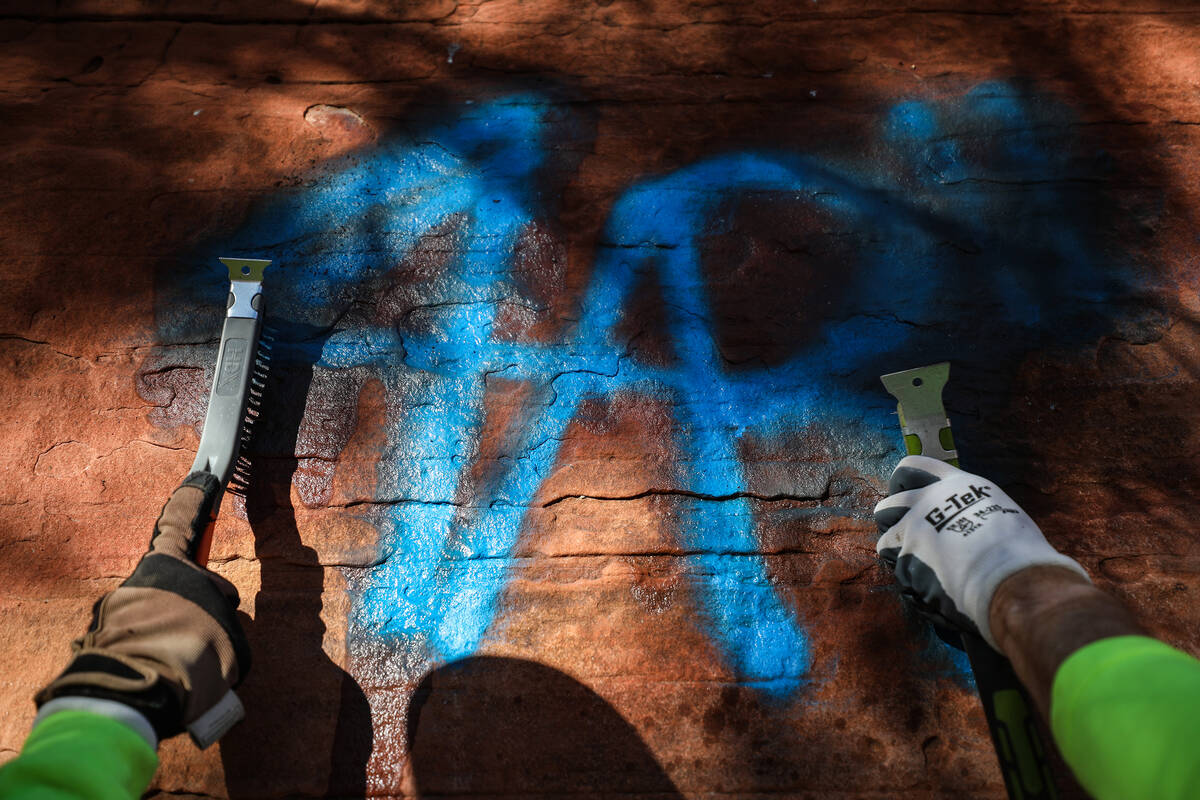
McDermott is the executive director of the Friends of Red Rock conservation group, which conducts similar cleaning efforts monthly. Representatives from the Southern Nevada Climbers Association and the Bureau of Land Management also were there Sunday.
“It’s unfortunate that we’re out here to remove graffiti but it’s great to have our crews out again,” said McDermott, noting that the pandemic had hampered some of those efforts.
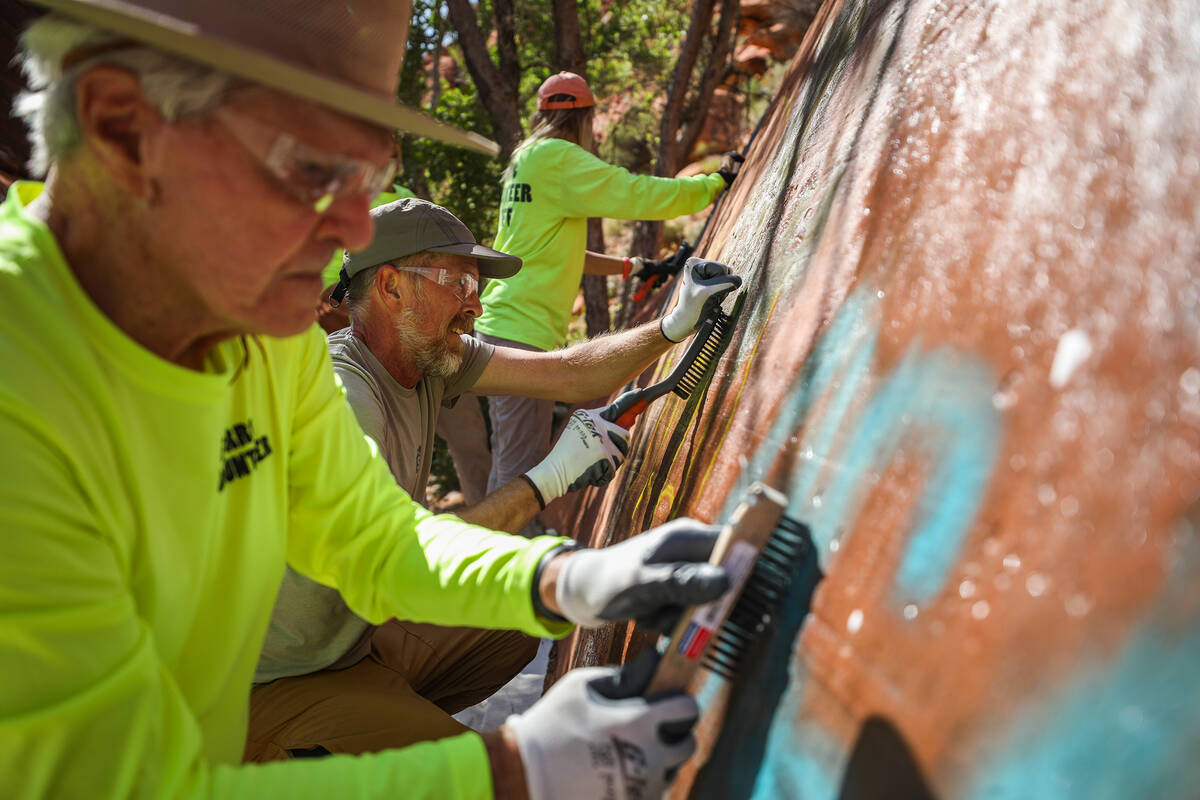
Vandalism at the 22,000-acre park is not new, but attention was renewed recently after Save Red Rock, a preservation group, posted photos on Facebook of illegible blue, purple and yellow tagging, which attracted media attention, BLM spokesman John Asselin said.
Just like illegal dumping in the 3.1 million acres of public land in Clark and Nye counties, the graffiti is a “pretty regular occurrence,” Asselin said.
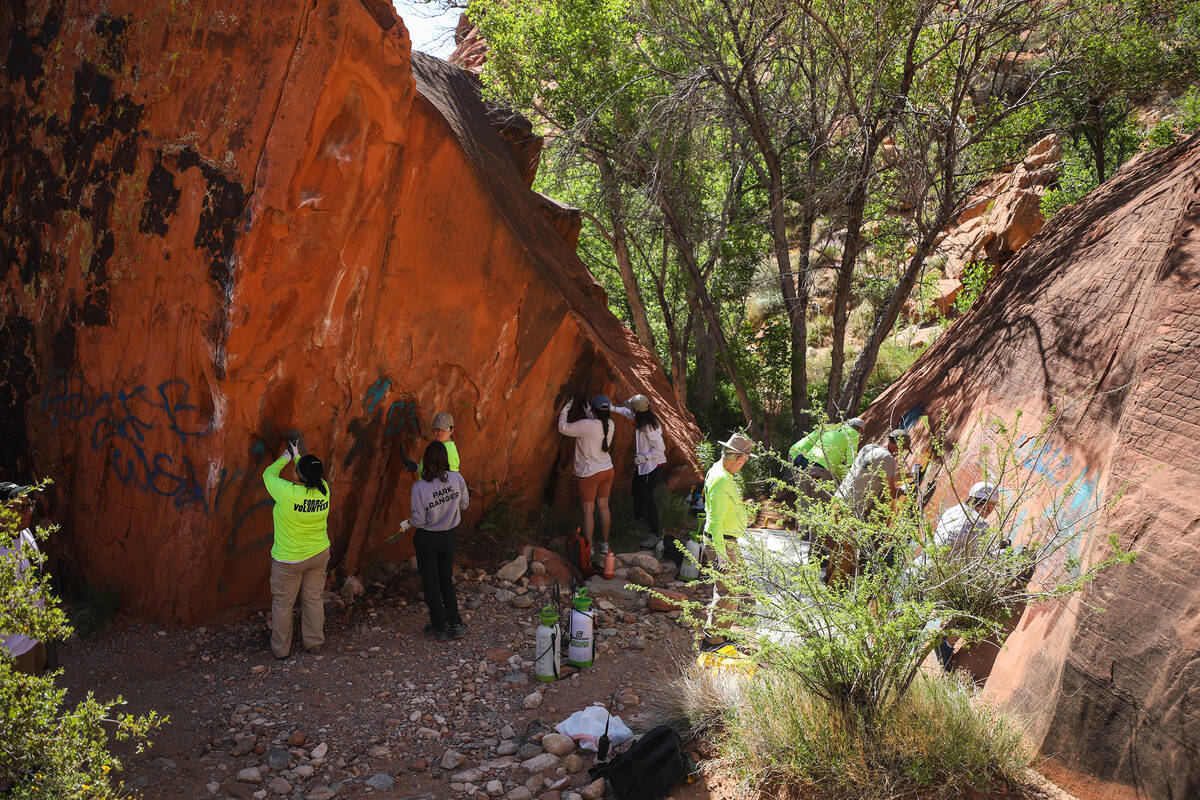
It is also challenging to stop, Asselin added. “Education is our biggest tool to help out with this.”
Those who witness tagging should not approach the vandals, but rather contact authorities and provide a good description, he said.
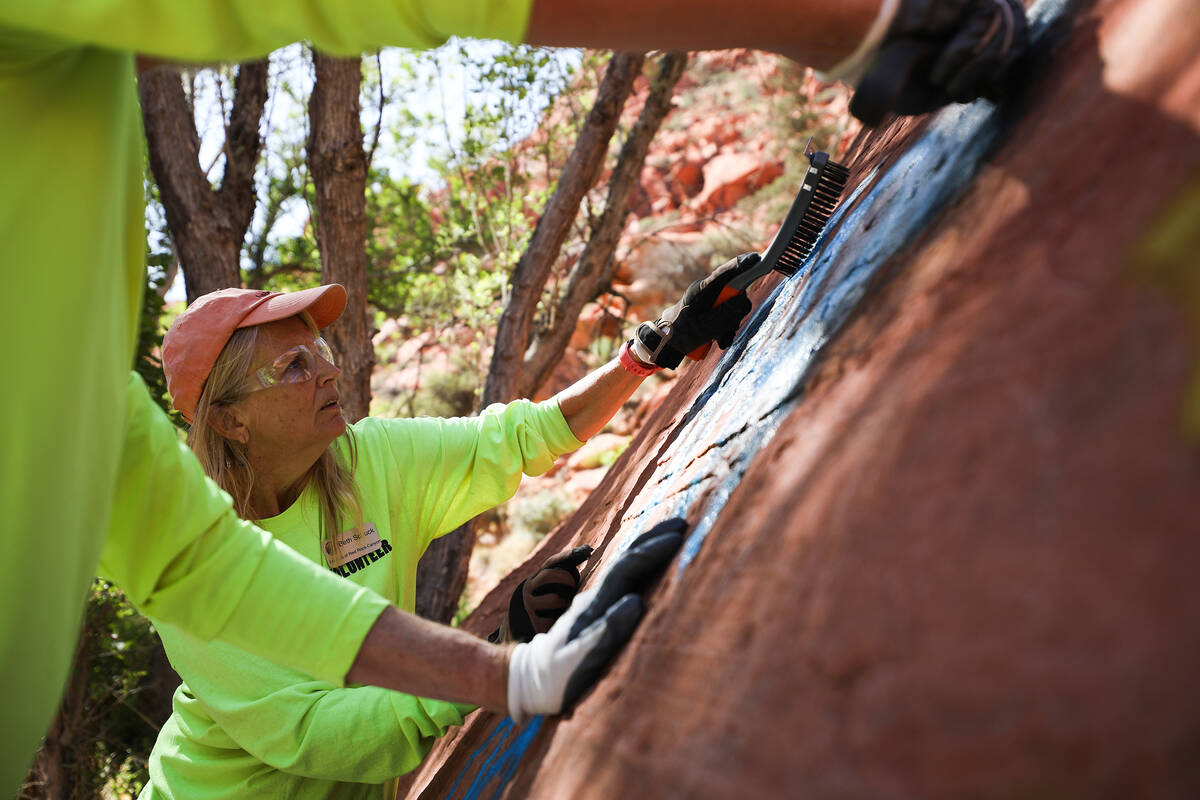
Some vandals hike up to 2 miles into the trail with the purpose of tagging, while others might mark up the park in the spur of the moment, not thinking through the consequences of the damage the red rocks estimated to be older than 200,000 years.
Even while using “biodegradable” cleaning chemicals, “exfoliating” the rocks with the brushes makes them lose their pristine form, and that is if the graffiti even comes completely off, Friends of Red Rock member Irene Yee told the volunteers.
The group gathered at the bottom of the trail where organizers passed out gloves, protective goggles and spray bottles of “This Stuff Works,” the brand name of the cleaning agent that goes for about $600 for a five-gallon bucket, Yee said.
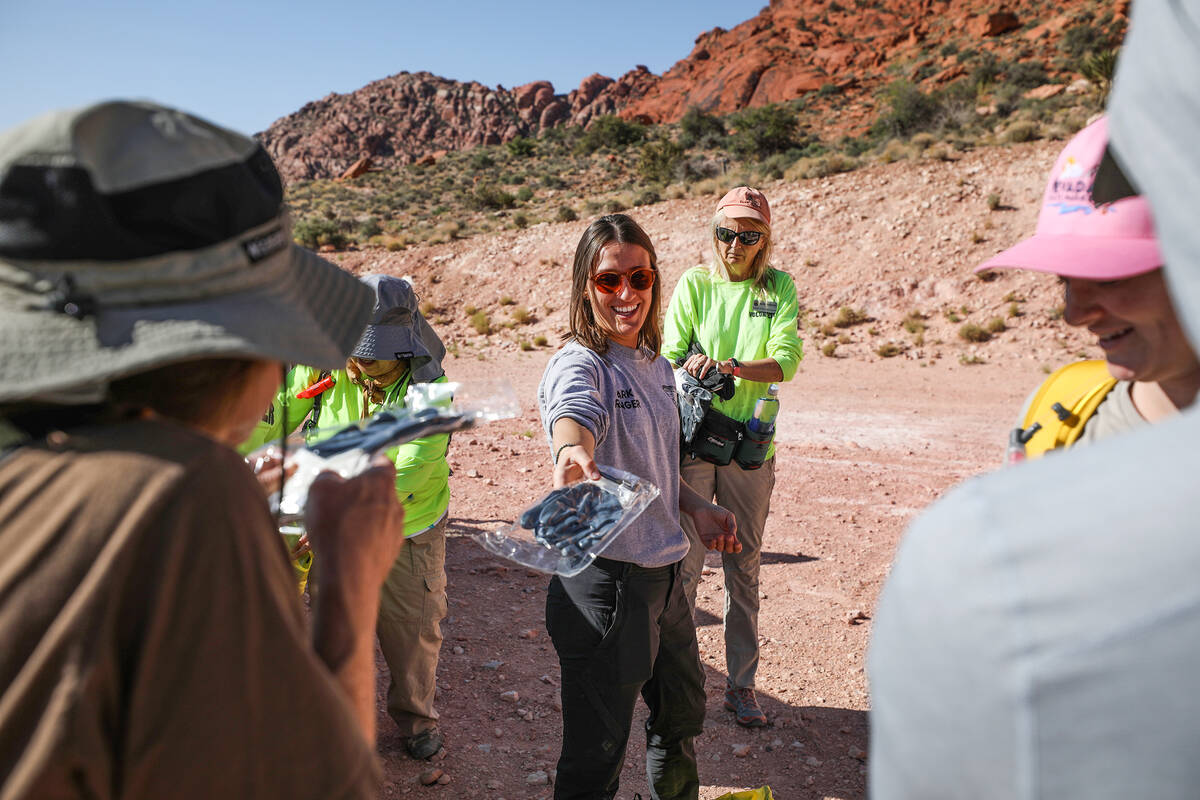
Then they hiked about half a mile into Ash Creek Spring and got to work in pairs. After spraying the chemicals and scrubbing for a few minutes, they sprayed water onto the rocks to watch some of the paint trail onto tarps.
The process is arduous and takes several tries, Yee told the volunteers.
“Do what you can,” Yee said. “Sometimes it is not as satisfying as you want it to be.”
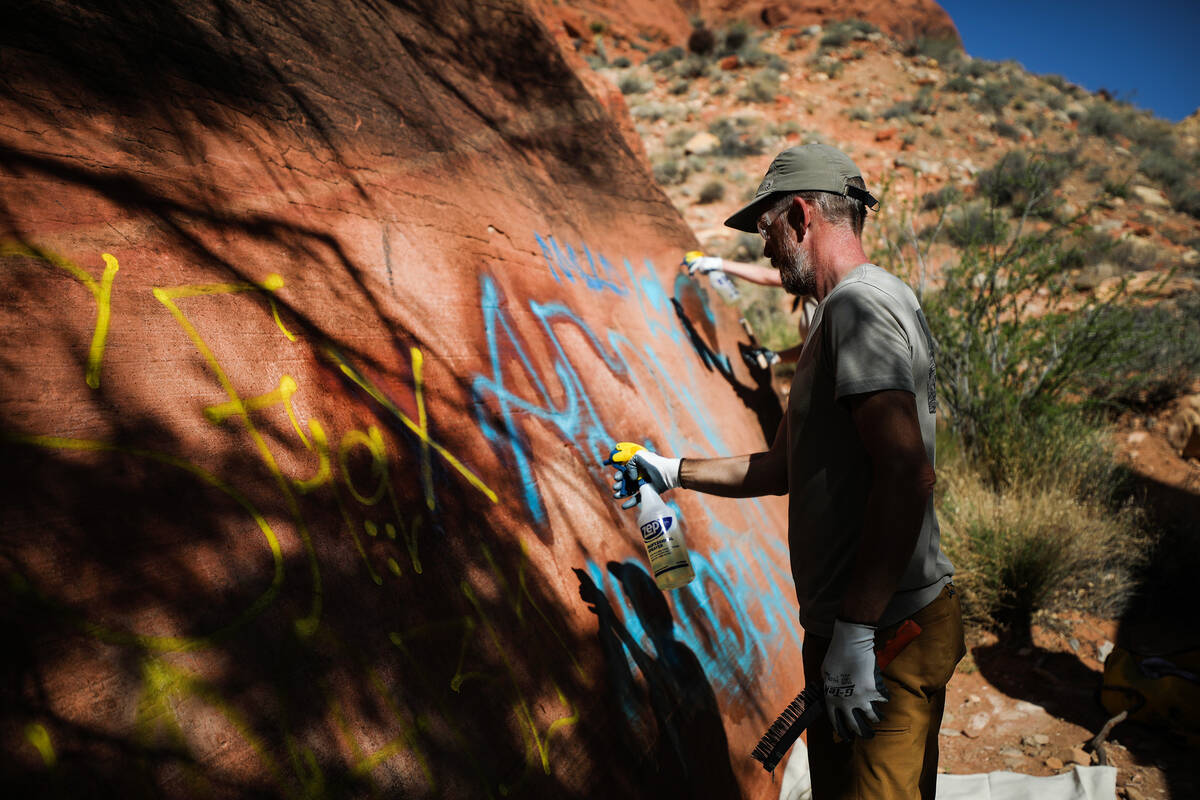
Lisa Harrison, volunteer coordinator with the climbers coalition, said that learning on social media about another instance of graffiti upset her.
“It just makes me really sad. I care about this land so much, and that’s just not what I want to see when I come outside,” she said. “As climbers, we love being out here and obviously the graffiti doesn’t look great, so we thought we could help fix that problem.”
McDermott echoed the sentiment, saying that when she has kids some day, “I want them to experience the same Red Rock I was able to and I want that to be a graffiti-free experience because this place is beautiful and we don’t need art or graffiti.”

















